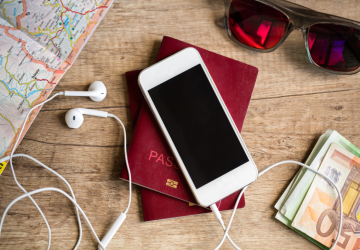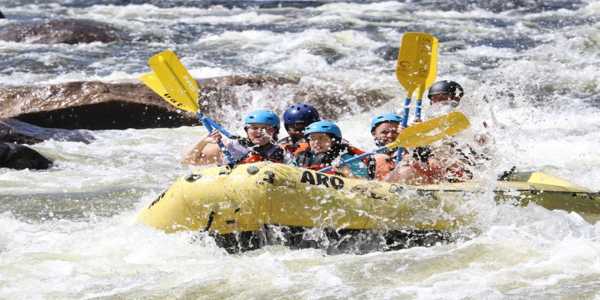How to Navigate Language Barriers: Essential Travel Language Hacks
Traveling to new and exciting destinations is a beautiful adventure that opens your eyes to diverse cultures, people, and experiences. However, one of the challenges that many travelers face is the language barrier. The inability to communicate effectively in a foreign language can sometimes lead to misunderstandings or missed opportunities. But fear not! With these essential travel language hacks, you can confidently navigate language barriers and make the most of your journey.
1.Learn Basic Phrases Before You Go
Before embarking on your trip, take some time to learn a few basic phrases in the local language. Simple greetings, asking for directions, and expressing gratitude can go a long way in breaking the ice and showing locals that you're trying to connect. Online language learning platforms, apps, and phrasebooks are excellent resources for these essentials. Familiarize yourself with common phrases like "hello," "thank you," "excuse me," and "where is."
2.Utilize Translation Apps
In the digital age, translation apps have become indispensable tools for travelers. Apps like Google Translate allow you to translate text or even have conversations in real-time instantly. Just type in or speak the phrase you want to convey, and the app will provide the translation. While these apps might be flawed, they can help you bridge the communication gap. Download the necessary language packs before your trip to use the app offline.
3.Embrace Non-Verbal Communication
Sometimes, a smile, a nod, or a simple gesture can convey more than words ever could. Use non-verbal communication by pointing, hand signals, or drawing to get your message. Remember, a friendly attitude transcends language barriers and creates connections. For example, if you're at a restaurant and can't communicate your order, pointing at pictures on the menu or miming eating can help convey your request.
4.Use Visual Aids

Visual aids are incredibly effective in overcoming language obstacles. Show a picture of your destination, the food you're looking for, or the activity you want to do. This can help locals understand your intentions and might even enthusiastically respond, guiding you to the right spot. If you're looking for a specific landmark, displaying a photo on your phone or in a brochure can clarify your inquiries.
5.Carry a Pocket Dictionary
A pocket dictionary can be a lifesaver when you're in a place with limited internet access or prefer the tactile feel of flipping through pages. These dictionaries are compact and easy to carry, ensuring you always have a backup when technology lets you down. Look for dictionaries specifically designed for travelers, including essential phrases, pronunciation guides, and local tips.
6.Stay at Language-Friendly Accommodations
When possible, choose accommodations that have staff members who speak your language. This can be immensely helpful in critical situations or when you need local advice. Hotels with multilingual staff are often more accommodating and understanding of your needs. Additionally, these staff members can assist you in making reservations, booking tours, and handling any language-related challenges.
7.Be Patient and Polite
Cultivating patience and politeness is critical when navigating language barriers. Understand that not everyone you encounter will speak your language, and that's okay. Approach interactions with a smile and a positive attitude; locals will likely appreciate and reciprocate your effort. If you need help communicating, don't get frustrated. Take a deep breath, stay calm, and use gestures or other methods to express yourself.
8.Learn from Locals
Interacting with locals is a golden opportunity to improve your language skills. Be bold and ask questions or seek help. Many people are willing to teach you a few phrases or correct your pronunciation, and these impromptu lessons can be educational and fun. Engage in conversations with shopkeepers, taxi drivers, and other locals you encounter during your journey. They can offer insights into local culture and provide you with valuable language practice.
9.Carry a Notepad and Pen

When verbal communication fails, a notepad and pen can save the day. Please write down your questions or requests; locals can respond by writing their answers. This method can be beneficial when getting detailed information or directions. For example, if you're lost and need tips for a specific street, write down the street's name and show it to a passerby. They can then provide you with written instructions.
10.Join Language Exchange Events
Research if there are any language exchange events or meetups happening in the area you're visiting. These gatherings provide a platform for travelers and locals to interact and practice each other's languages. It's a fantastic way to make new friends while honing your language skills. Look for online groups, community boards, or event listings that announce language exchange meetups. These events often occur in cafes, parks, or cultural centers and provide a comfortable language practice environment.
11.Mastering Common Hand Gestures
When words fail, gestures come to the rescue. Learning and using common hand gestures can help you convey essential messages and understand locals better. Thumbs up, pointing, and waving are often universally understood. However, be cautious, as gestures can carry different meanings in different cultures. For instance, the "OK" hand sign might be offensive in some countries. Doing a bit of research on local gestures before your trip can prevent unintentional misunderstandings.
12.Using Technology for Language Learning
Before your journey, take advantage of language learning apps and online resources to familiarize yourself with the local language. Apps like Duolingo, Babbel, or Memrise offer interactive lessons to help you grasp essential vocabulary and phrases.
Consistent practice can build your confidence and improve your communication skills. Additionally, consider subscribing to podcasts or watching videos in the target language to get accustomed to its sounds and rhythm.
Conclusion:
In conclusion, while language barriers may initially seem daunting, they should never discourage you from exploring the world. With these ten essential travel language hacks, you can confidently connect with locals, immerse yourself in different cultures, and create unforgettable memories.
Remember, the willingness to learn and the desire to communicate can transcend linguistic limitations. So pack your bags, embrace the adventure, and let language become your bridge to incredible experiences!











